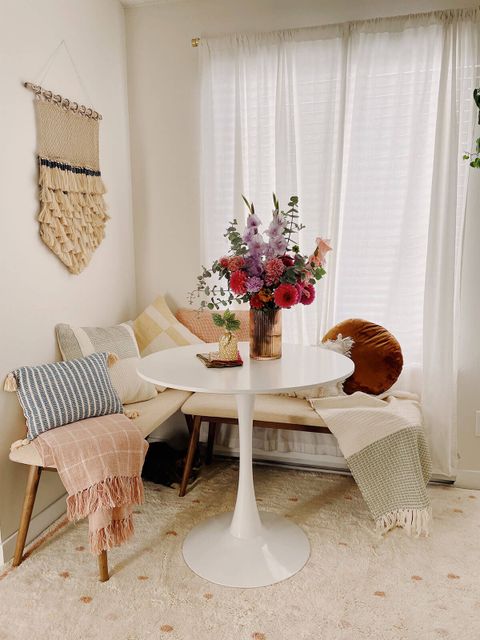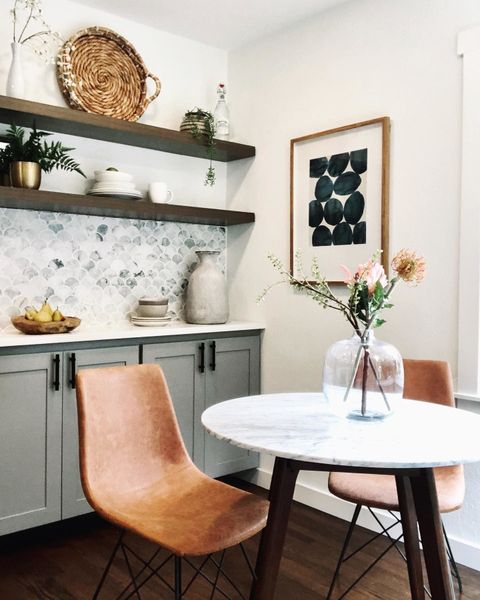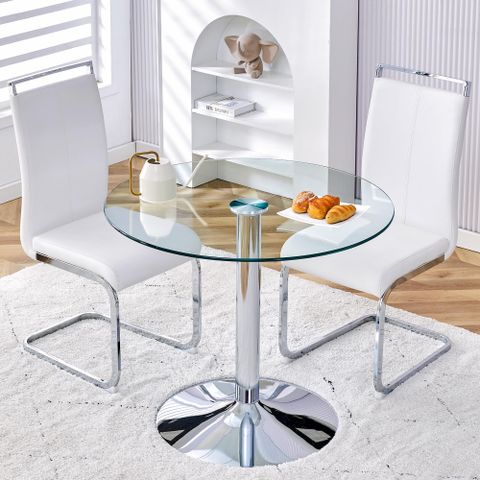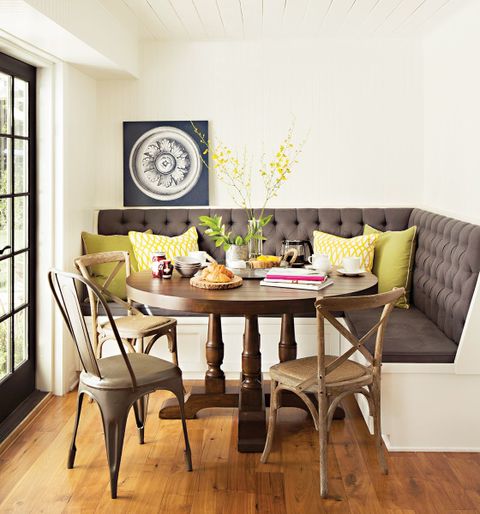There’s something magical about a small round dining table tucked into a corner. It creates intimacy, maximizes space, and brings people together in a way that rectangular tables simply cannot match. Whether you’re planning a new dining area or updating an existing one, choosing the right small round table for your cozy corner requires thoughtful consideration. This guide will walk you through everything you need to know to make that perfect choice.
Picture this: you’ve finally found the perfect spot in your home for a dining area. It’s tucked away in a corner, bathed in soft natural light, and just begging to host intimate meals with family and friends. But now comes the challenge – how do you choose the right small round dining table to fill this space? It’s not just about size, though that’s important. The right table will complement your room’s aesthetics, fit your lifestyle, and create the cozy atmosphere you desire. Let’s dive into what makes a small round dining table truly special and how to pick the one that’s perfect for your corner.
Understanding Space Constraints and Layout
Before you even start looking at tables, you need to understand exactly how much space you have. Measure your corner carefully, taking note of any obstacles like windows, doors, or built-in features. A small round table typically ranges from 36 to 48 inches in diameter, but the key is finding the sweet spot that works with your corner’s dimensions. Think about traffic flow too – you want enough room to open chairs without bumping into walls or furniture. Consider how many people you’ll regularly seat. A 36-inch table might work for two, while a 42-inch table could accommodate four comfortably. Don’t forget to leave at least 36 inches of clearance around the table for easy movement. What matters most is creating a space where everyone feels comfortable and there’s no feeling of crampedness.
Material Matters: Wood, Metal, and Glass Options
The material of your dining table affects both its appearance and practicality. Wood tables bring warmth and natural beauty to any room. They’re often more durable and can handle daily wear better than other materials. Look for hardwoods like oak, maple, or cherry for longevity. Metal tables offer a modern look and are generally easier to clean. They can also be lighter weight, which helps if you plan to move the table occasionally. Glass tables create an airy, open feel and make small spaces appear larger. However, they show fingerprints and scratches more easily. Consider your lifestyle when choosing – if you have young children or pets, wood or metal might be more practical. For those who entertain frequently, glass can provide that elegant touch while still being functional. Each material has its own personality, and the right choice depends on how you want your dining area to feel.
Style and Design Considerations
The style of your table should reflect your personal taste and blend with your existing decor. Traditional round tables often feature carved details and classic shapes that complement older homes or formal settings. Modern designs tend to be sleeker, with clean lines and minimalist appeal. Industrial styles might incorporate metal elements and raw finishes. Contemporary options combine various materials and bold shapes. Think about how the table will interact with other furniture in the room. Does it need to match your sofa or accent chairs? Or should it contrast beautifully to create visual interest? The legs of the table matter too – some sit low to the ground, others are taller. Consider how the table’s height will pair with your chairs. A mismatched height can make the whole setup feel awkward.
Seating Needs and Comfort
Choosing the right number of seats is crucial for a small round table. You want to avoid having guests feel cramped or uncomfortable. A general rule of thumb is to allow about 24 inches of table circumference per person. So, for four people, you’d need a table with a diameter of roughly 36 inches. But remember, comfort isn’t just about numbers. Think about the shape of your chairs too. Round chairs work well with round tables, but square chairs can also work if they’re positioned properly. Consider the height of your chairs – they should be comfortable for your typical diners. Also think about whether you’ll need extra seating during special occasions. Some tables come with expandable features or can accommodate additional chairs when needed. The goal is to create a space where everyone can eat comfortably without feeling like they’re competing for space.
Practical Features and Functionality
Beyond basic dining needs, consider what extra features might benefit your situation. Some small round tables have storage compartments underneath, perfect for keeping napkins, utensils, or seasonal decorations. Others may have extendable capabilities, allowing you to add more seats when entertaining. Look for tables with protective coatings that resist stains and scratches. If you live in a humid climate, moisture-resistant materials might be necessary. Weight is another factor – a lightweight table allows for easy repositioning if your layout changes. Check if the table has rounded edges or sharp corners that might pose safety risks for children. Some tables come with built-in features like wine racks or serving trays. These aren’t essential, but they can add convenience to your daily routine.
Budget and Value Considerations
Dining tables vary widely in price, from budget-friendly options to premium pieces that can cost several thousand dollars. Set a realistic budget before you start shopping, and remember that quality often pays off in the long run. A well-made table will last longer and provide better value over time. Consider the cost of matching chairs, if you need them. Sometimes buying a table and chairs together offers savings, but you might find better deals by shopping separately. Look for sales or seasonal discounts, especially during holidays or end-of-season clearance events. Don’t always go for the cheapest option – sometimes investing a bit more upfront means fewer replacements later. Consider the table’s versatility – will it work for other purposes beyond dining? A versatile piece can justify a higher price tag. Read reviews from people with similar lifestyles and spaces to yours. Their experiences can help you understand what to expect.
Choosing the right small round dining table for your cozy corner is both an art and a science. It requires balancing practical considerations with personal preferences, ensuring that every element works harmoniously together. You’ve learned that space measurement, material selection, style matching, seating comfort, practical features, and budget all play crucial roles in making the right decision. Remember, this table will become a central part of your home life, hosting countless meals, conversations, and memories. Take your time with the selection process, measure carefully, and trust your instincts. The perfect small round dining table isn’t just about fitting in a corner – it’s about creating a space where you and your loved ones can gather, connect, and enjoy each other’s company. When you find that table that feels right, you’ll know it’s worth every moment of careful consideration.














